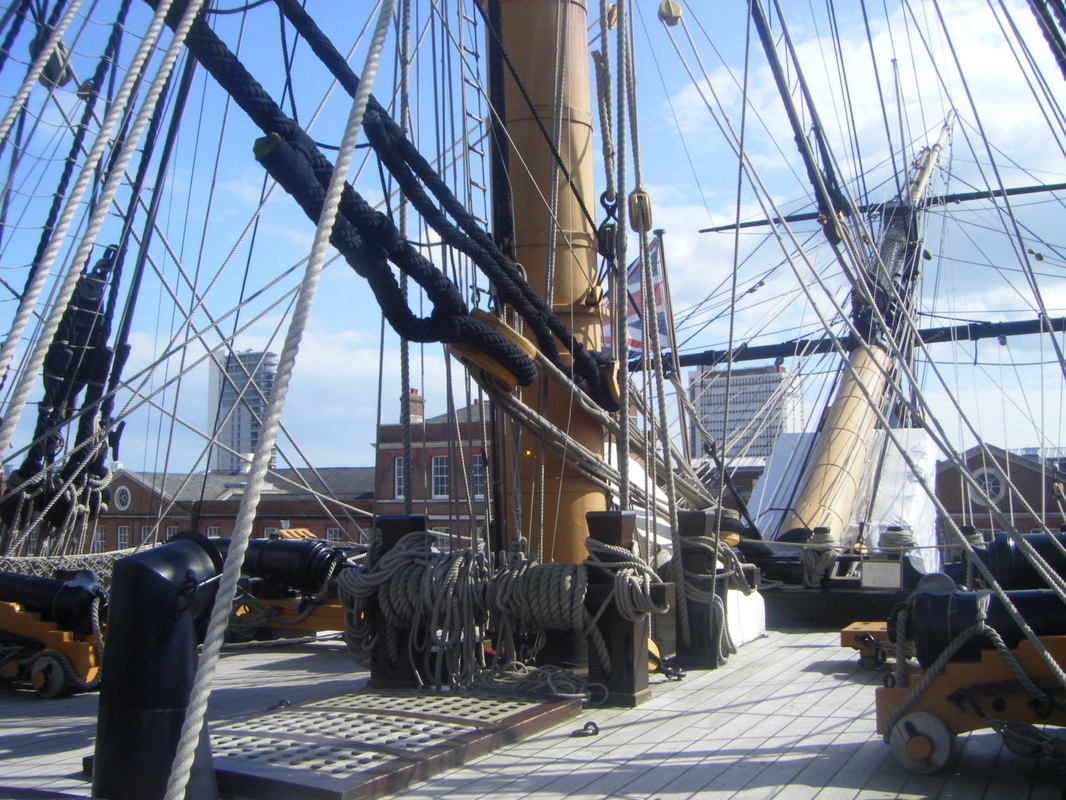Blockades have long been a part of naval doctrine. Used for many years to prevent a fleet from putting to sea and, especially in the case of the Biscay Coast, to prevent an invasion of Britain. By 1805 Britain had around 30,000 men stationed off Brest, arguably its most important area of operations for blockades between 1793 and 1805. Blockades managed to reduce the trade of both imports and exports and, with an indirect side effect of affecting the morale and efficiency of an enemy fleet, they had an impact on engagements at sea as well. Blockades were not without their problems; health, logistics, morale and the weather all played their part in reducing their effectiveness, not to mention the immense cost of keeping a blockading fleet at sea for a prolonged period of time.
Brest is fewer than 150nm from the British coastline and, save for the years at peace after the Treaty of Amiens, we conducted an almost permanenet blockade of the port. Having a presence was important, and a close blockade was to become incredibly effective and, after having kept a fleet in port for a prolonged period of time, their desire to engage and invade would be reduced.
The geography of Brest meant that the efficacy of such a blockade was not without problems. Part of the reason it became the main Atlantic base for France is the shelter provided from westerlies. A closer inshore blockade was preferable, as it would stop the French putting to sea, save for small windows of opportunity in bad weather. However, the cost implications of keeping a fleet at sea for such a long period of time was enormous. Due to this, British policy on close and distant blockades in the period appears largely dependent on who was Commander in Chief of the Channel Fleet at the time.
In 1797, under Hood, the Channel Fleet often did not stray far from Torbay, with a policy of cruising off Ushant, meaning the French had a number of opportunities to escape in fog. In 1799, Admiral Bruix escaped Brest, reaching Cadiz with 25 ships, before returning with the Spanish in tow. Another fleet escaped with 3000 troops bound for Ireland in 1798, reinforcing the need for a close blockade.
For Brest, the only way to monitor the channels surrounding it was with a close blockade and development of an effective rotation system. In 1800, the command of the Channel Fleet was taken by the far more experienced, though notably strict, St Vincent, who caused a ‘dramatic and immediate improvement in close blockade’, using the tried and tested utilisation of both an inshore and offshore squadron. The offshore squadron, further out consisted of ships large enough to form a line in battle. The inshore squadron comprised smaller and more versatile ships, such as frigates, which were able to move faster and pass inshore with relative ease.
In Toulon, especially, frigates were indispensable for blockade duty and were used effectively for reconnaissance, ensuring that, for the most part, the blockade there was a success, though the French managed to escape on a number of occasions. Collingwood himself once stated that it was wonderful the amount of terrorism a small frigate could inspire on an enemy’s coast. Small, fast and able to fight fearlessly, frigates were bold and usually well drilled. Captains such as Pellew and Cochrane ensured their crews were able to fight, and fight well.
The ships themselves are a part of this wider picture to be looked at when judging the success of blockades as without the development in British shipbuilding and the ability to have a fleet able to maintain such a blockade, they would never have had the success they did. A shortage of frigates was a problem throughout the period. Incredibly versatile vessels known for being faster and more manoeuvrable, they could conduct raids and also take prizes, quickly. Between 1793 and 1805 France continued its shipbuilding, but not to the extent of Britain.
The Revolution had caused what was once a strong shipbuilding nation to suffer, due to financial and administrative problems. Shipbuilding was in decline and they struggled to repair, refit and even man their existing ships. This too was the case for Spain. For the British, trade patterns meant that they had access to superior materials and, as Brest and Rochefort, the main locations for French shipbuilding, were both blockaded, France had no access to vital supplies for their dockyards, which had only been partially resourced during the Peace of Amiens. This meant that for years to come the French often made do with materials which were not suitable, not as durable and their fleets were far more heavily damaged as a result. By 1805 shipbuilding at Brest was almost non-existent.
Blockading fleets had a tendency to be on station for months at a time and the ‘incessant tedium; and physical and mental stress of blockade ensured that discipline remained a problem in the Channel Fleet, though less so under St Vincent, known for being notably strict and keeping his men well drilled. St Vincent was known to stand on deck at first light watching to see which Captains were not also on deck and discipline as he saw fit. Long days of doing nothing off Brest or Toulon could lead to boredom, dissatisfaction and even mutiny. St Vincent, both at Brest and Cadiz, would ensure crews were kept busy, men were on watch more frequently, and rotations back to Britain were short, time at sea was lengthened and men well trained, meaning superior performance in engagements also. Cornwallis maintained these blockades along the Biscay Coast, beginning in 1803, at the start of the Napoleonic Wars, and Napoleon himself forbade the fleet to even attempt to leave when Cornwallis was on station.
Another reason blockades had such success was victualling. Ships on blockade duty before Cornwallis were supplied for the time they would be away and then returned to Portsmouth for resupply, which was suitable for short periods, but not so much for longer deployments. The development and use of smaller ships to relay provisions to those on blockade duty played a huge part in saving both time and money. It also ensured that an effective close blockade would be upheld. B
Blockades had an impact on both the French and, to a lesser extent, Spanish economies and the Combined Fleet were no match for the British by the time they met off Cape Trafalgar in 1805, due to a lack of sea time and training. Had the French and Spanish been at full strength, with experienced commanders, it may have been an entirely different outcome.







